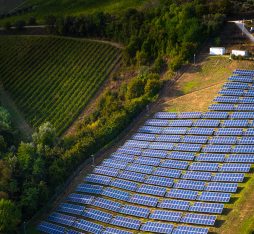In the Akagera National Park in Rwanda, LoRaWAN technologies are used to combat poaching more effectively.
A long range, low energy consumption, and economical technology, LoRa is making progress all over the world. According to the LoRa Alliance, a non-profit organisation that promotes the LoRaWAN protocol for the Internet of Things (IoT), today this tech is the subject of deployments in around one hundred countries, including several developing countries in Asia, Africa, and Latin America. Regions of the world where IoT offers future prospects and can help to resolve many problems.
The biggest LoRa network in the world
It is on the Indian subcontinent that one finds the most ambitious LoRa projects, if not the most ambitious of all. In effect, Tata Communications has announced the deployment of the biggest LoRa Network in the world. It will reach 400 million people in nearly 2,000 cities and communities! The Indian telecommunications company, which has already deployed LoRa technology in 38 cities and plans to cover the majority of the country by the end of 2019, is thus building the foundations of the Internet of things by developing a network capable of meeting the connectivity needs generated by the millions of connected objects that should sweep into the country in the coming years.
Such a network will enable the development of an ecosystem of connected objects, applications, and services in many sectors within the framework of projects carried out by both private enterprises and public authorities (like the Smart Cities Mission launched by the Indian government in 2015). Tata Communications is already offering several end-to-end IoT solutions including smart meters to track gas, electricity and water consumption; a connected alert button that can be activated to report an aggression and is aimed in particular at women; connected accessories for improving health and security in the workplace; environmental sensors, smart lighting, etc.

The LoRa network to the rescue of protected animals
8,000 km away as the crow flies, in South Africa, a company called Comsol has built the biggest IoT-dedicated network in Africa. Named Comsol IoT, it covers the major South African cities. It is worth noting that LoRa technology had already made an inroad into the country thanks to FastNet, a subsidiary of telecommunications company Telkom specialising in IoT and machine-to-machine, who have used this technology since 2015 as a basis for their “smart metering” offering aimed at public water, electricity, and gas providers.
As underlined by Comsol CEO Iain Stevenson in a press release: “IoT offers solutions for smart cities, smart businesses, and even many of the challenges we face as a society, for example managing scarce resources like water.” For this matter, the example of CityTaps is interesting: the French startup has designed a solution – that it is experimenting in remote cities in Africa – enabling people to pay for their drinking water with a mobile phone thanks to smart water meters linked to a private LoRaWAN network.
In Rwanda, where the LoRa network was deployed in 2017 and 2018 by operator Inmarsat within the framework of the Smart City Kigali programme, let’s mention the fine example of the Akagera National Park that has launched a “smart park” system based on LoRaWan. The idea? To use this technology to effectively combat poaching. One hundred solar sensors have been installed within the park, these regularly send signals that are relayed to a control room thanks to LoRaWAN gateways placed at high altitude around the site. Agents use the data collected to track the localisation of animals, park staff, or tourists’ vehicles, and to check the state of the electric fencing and other security equipment. The facility has several advantages: it is more secure than traditional radio systems (researchers realised that the poachers were intercepting the radio signals used by the park’s agents and scientists to track endangered species), it is less costly than satellite positioning systems, and connection to the LoRa network inside the park is highly reliable.
What about South America?
Now let’s head to the South American continent where a national LoRaWAN network has just reached its first stage of deployment in Montevideo, the capital city of Uruguay. Led by YEAP!, and launched by iCondor, the project aims to increase LoRa’s coverage in Uruguay and Paraguay. YEAP! was at the origin of the deployment of the first Argentinian LoRaWAN network in 2017 (in the cities of Buenos Aires and Rosario) and 2018 (across the whole of the country). Let’s also mention Brazil, where the LoRa network is deployed on a national scale by Semtech and Anatael, the national telecommunications agency, following the publication by the latter in early 2018 of new technical provisions on communication devices by radiofrequency, enabling exploitation of the technology. An IoT Open Lab was opened in the country in April 2018. Just like the one opened by Orange in Châtillon, in the Ile de France region, it enables trading partners, manufacturers of connected objects and electronic components, as well as developers, to experiment and test solutions end-to-end on the LoRa network.
The aim of the LoRa network is to support a multitude of IoT applications within the scope of smart cities, industry 4.0, or smart agriculture. This last area is particularly important in developing countries where the agricultural sector is at the heart of the economy. Sensors and connected objects can help farmers to cope with difficulties linked to bad weather conditions, to make everyday tasks simpler, and of course to increase crop yields. More broadly, they can help these countries to take up the challenges of development (management of resources or pollution, for example). Here LoRa technology, a connectivity solution tailor-made for IoT, is resolutely a bearer of progress.










